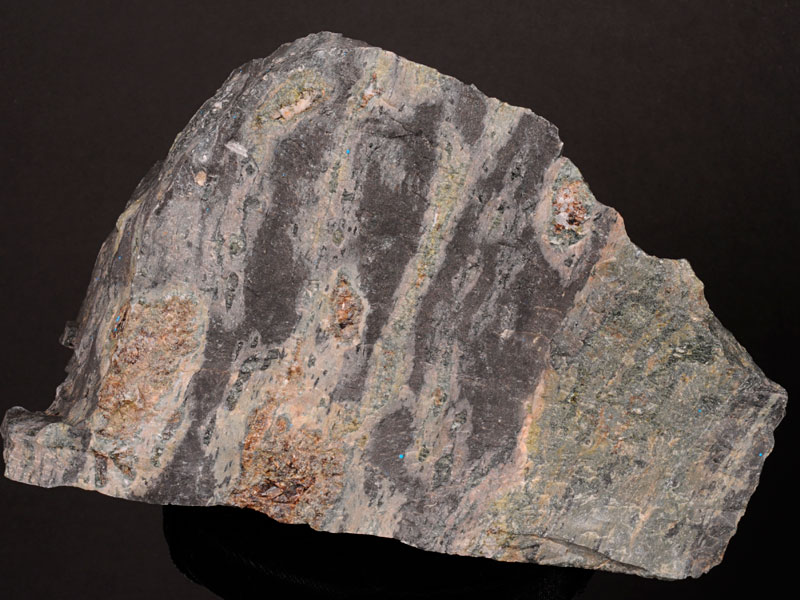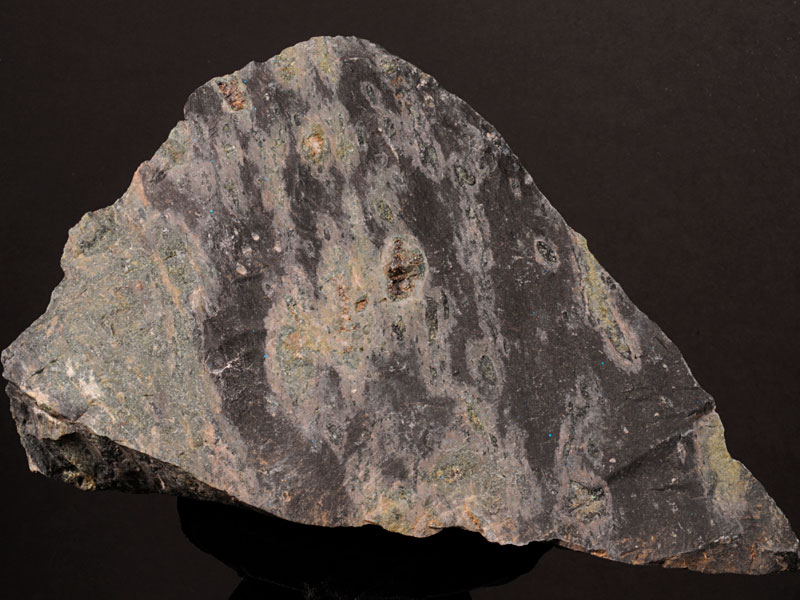Fact sheet
This rock formed originally as a volcanic ash deposit of andesite composition during the Ordovician period, but was later metamorphosed and transformed by heating and fluids associated with the Shap granite intrusion. It is now best described as a skarn, a term often applied to rocks that have experienced significant heating and strong chemical alteration by granite intrusions. The rock is known in the stone industry as Blue Shap granite, although it is neither blue nor a granite. The term ‘granite’ is used in the stone industry to mean most hard rocks used for building facing or kitchen work surfaces, whereas geologists restrict the use of the term to a specific compositional range of rocks.
Almost half of the thin section is made up of a mosaic of large, pale pink garnet grains growing into one large cavity filled by carbonate minerals, and another cavity filled by quartz. Unusually, this garnet it is not black (isotropic) when viewed between crossed polars but exhibits strong compositional zoning formed when it grew. The finer-grained areas of the thin section exhibit the remains of the volcanic rock texture with some flattened vesicles. Minor amounts of epidote and other accessory minerals are also present.
The United Kingdom Virtual Microscope (UKVM) collection consists of igneous, sedimentary and metamorphic rocks from around the UK.
It is intended as a teaching resource, helping to tell the story of the common rock types and how they form, and reflecting the history of the UK at the margins of the continent of Europe. The collection is a series of teaching sets, for example igneous rocks from the North Atlantic Igneous Province and SW England; high-temperature metamorphic rocks from Scotland and low-temperature metamorphic rocks from Wales; and sedimentary rocks, including English limestones and sandstones.








